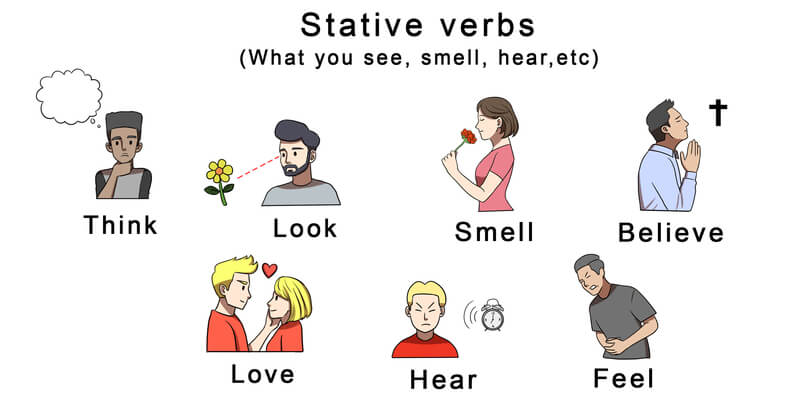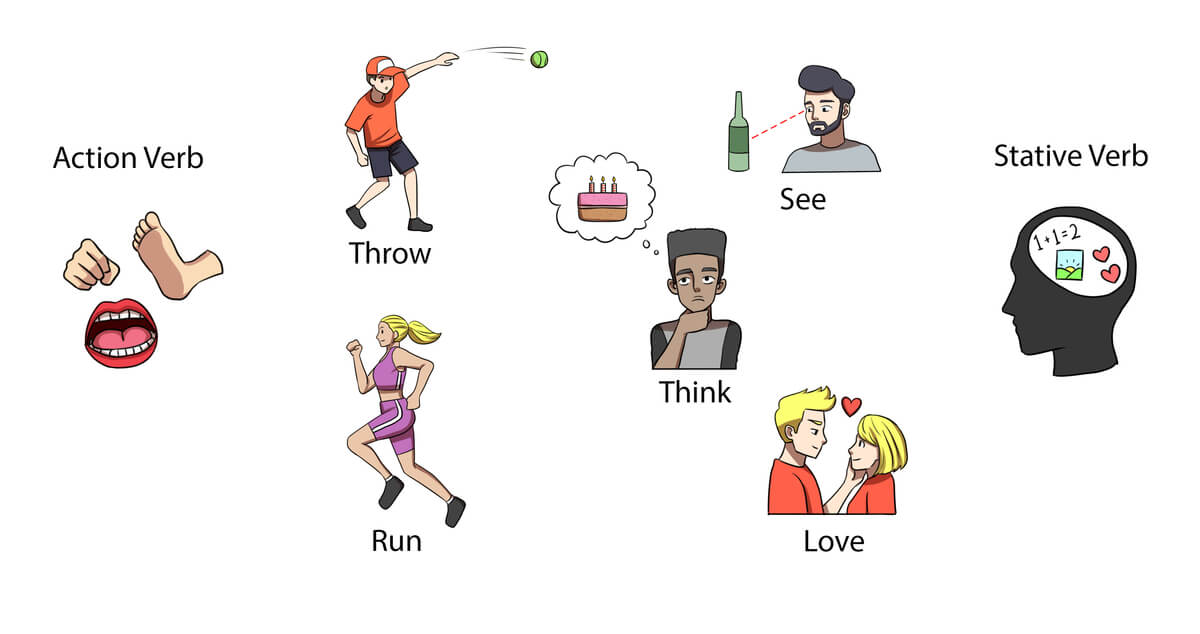Stative Verbs
- Stative verbs describe states or conditions that are static or unchanging. They do not show a physical action.
- Action verbs express an action, event, or change.
- Stative verbs are often used in the simple present tense and do not usually have continuous (-ing) forms.
Let's talk about a type of verbs called stative verbs. Understanding what they are and how they are different from action verbs is an important part of learning English.
What are Stative Verbs?
Stative verbs describe states, conditions, thoughts, feelings, and sensations. They are about what someone or something is. Normally, they do not involve any physical action.
Common stative verbs are: like, love, dislike, hate, see, feel, think, taste, hear, have, believe, smell.

Examples:
-
I love pizza.
"Love" is the stative verb (feeling).
-
He believes in ghosts.
"Believe" is the stative verb (thinking).
What are Action Verbs?
Action verbs are different from stative verbs. They express an action, event, or change.
Common action verbs are: eat, drink, take, kick, read, find, run, use, walk, get, laugh.

Examples:
-
She eats a hamburger.
"Eat" is an action verb.
-
I read a book.
"Read" is an action verb.
Stative verbs shouldn't be used in continuous tenses
Stative verbs do not usually have continuous (-ing) forms. This is because they represents a state or condition.
For example, we say "I know English", NOT "I am knowing English".
Pratique este tópico com o AI English Tutor
AI English Tutor irá lhe ensinar a gramática e praticá-la com você em formato de conversação. Além disso, mais de 100 questões práticas sobre este tópico para consolidar sua compreensão.
Experimente ALULA gratuitamente em seu telefone ou tablet








Você tem alguma dúvida sobre esta lição? Pergunte na seção de comentários, abaixo.